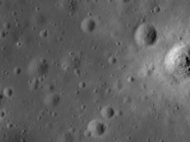Research Group "Planetary Surfaces"
Archived page
Planetary surfaces are the boundary locations where the solid or liquid material of the outer crust on planetary bodies comes into contact with the atmosphere or outer space. Planetary surfaces can be found on a variety of cosmic objects starting from terrestrial planets and their satellites to planetesimals. One of the main goals of the study of planetary surfaces is to develop an understanding of the basic physical processes underlying the morphology and evolution of planetary surfaces in our solar system.
As human life takes place on a planetary surface the exploration of planetary surfaces plays a key role in establishing the conditions under which life could develop. One of the prime tasks in the field of planetary surface exploration is the precise observation of the planetary surfaces through space born or Earth based observations which provide the basis for the analysis and interpretation of the recorded information.
The working group Planetary Surfaces at the Max-Planck Institute for Solar System Research is involved in the building and operations of space instrumentations which builds cameras and spectrometers to harvest information collected during space mission flown to different planetary bodies as well as the analysis and interpretation of this information.















